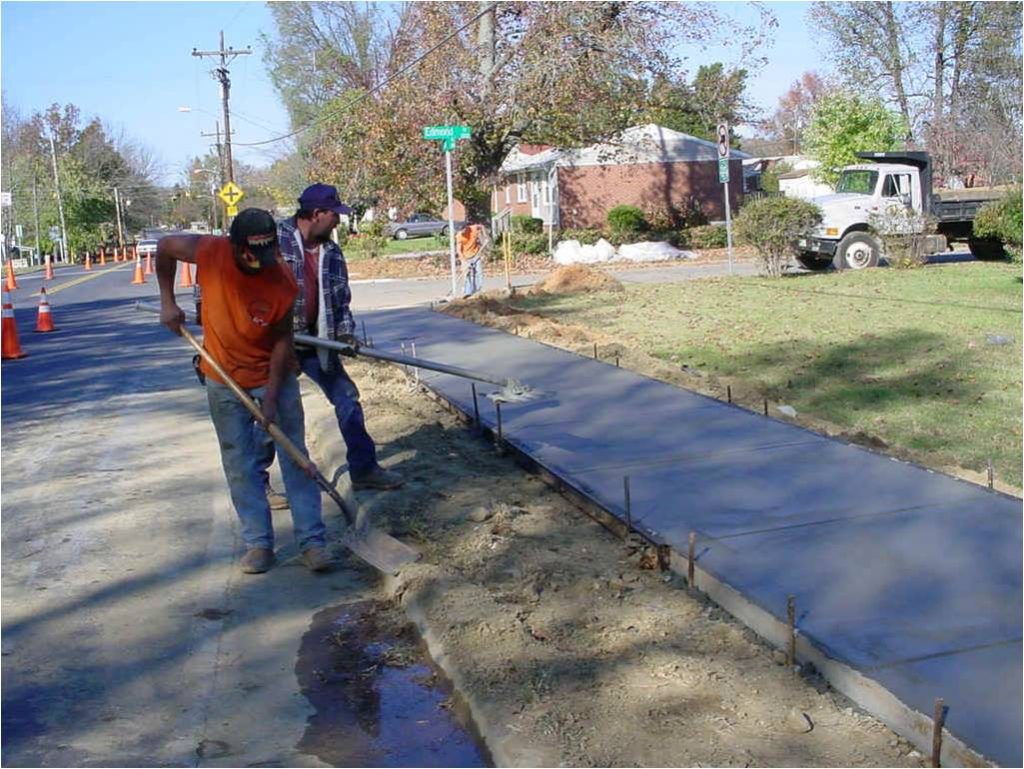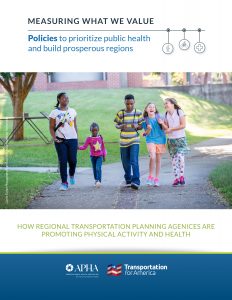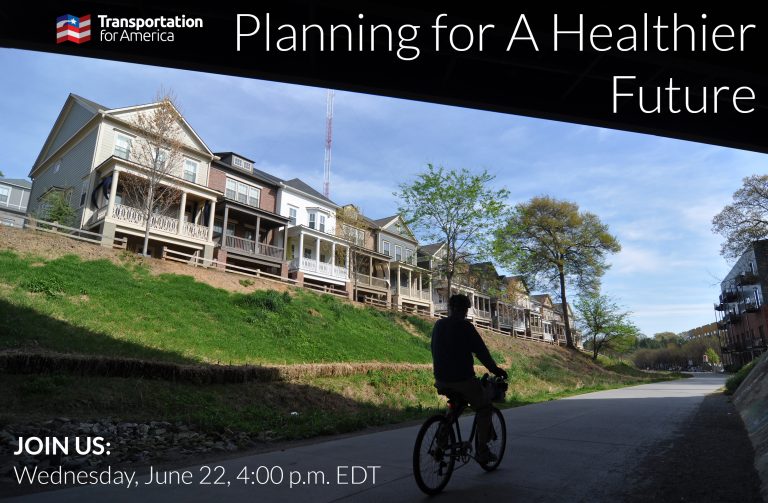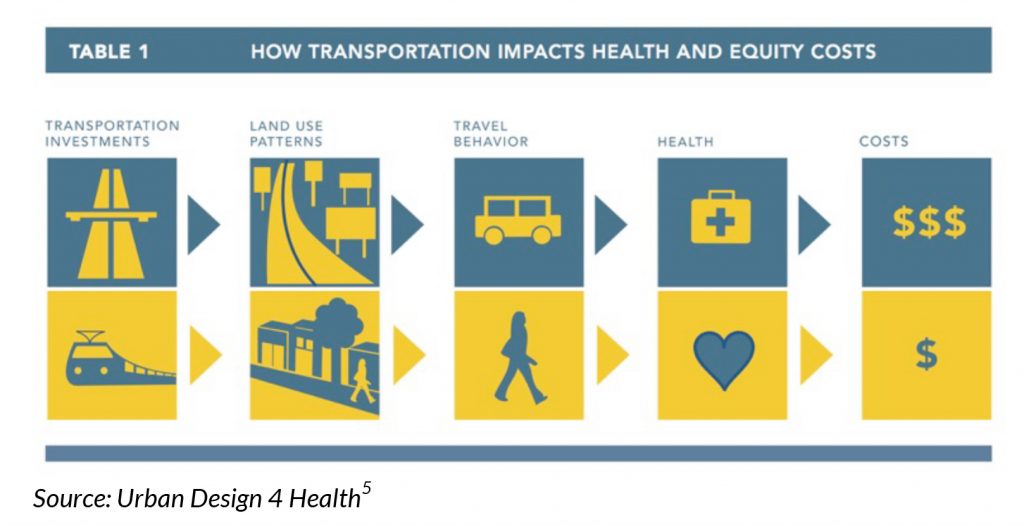
Join us for the release of a new paper showing how regional transportation planning agencies are promoting physical activity and health while improving mobility and access to opportunity.
 Register for the launch of Measuring what we value: Policies to prioritize public health and build prosperous regions on February 21st at 12:00 p.m EDT.
Register for the launch of Measuring what we value: Policies to prioritize public health and build prosperous regions on February 21st at 12:00 p.m EDT.
How we get around each day shapes our quality of life, especially our health. People who walk or bicycle more for transportation are shown to have lower rates of heart disease, diabetes and other conditions that can complicate or shorten lives. And the demand for more opportunities to safely walk and bicycle is at an all-time high in cities and towns of all sizes across the country.
And communities are responding by planning, funding, and fast-tracking projects to make bicycling, walking, and riding transit safer, more convenient, and more realistic as travel options.
But getting these projects planned, designed and built can be a challenge. How can regions bring more of these projects to fruition? How can they integrate them into the processes of choosing what to build? How can they upend perhaps decades of radically different priorities to make these types of projects the norm?
This new paper, produced by T4America and the American Public Health Association, outlines four policy levers MPOs have at their disposal to help increase and improve active transportation projects to meet the demand, decrease health disparities, increase access to opportunities, and strengthen local economies — with specific short real-life stories to go with each. On this launch webinar, we’ll be joined by staff from a number of metropolitan planning organizations (MPOs) to hear how they’re successfully prioritizing bicycling and walking projects. We’ll explore the specific policies these MPOs have adopted, and how they’ve implemented them.
REGISTER NOW
Register today and we’ll also send you a short four-page preview of the full paper to be released on February 21st, a doc summarizing the specific strategies that MPOs are using to make more of these projects a reality.
Already joining us on February 21? Spread the word!
(Note: We profiled four of these MPOs at length in this package of related short case studies, released late in 2016.)







 Thanks to 2012’s MAP-21 legislation, all metro areas and states will soon be using a limited array of performance measures. While the in-progress federal requirements will cover a limited range of measures, T4America is releasing a new resource next week to help metro areas find ways to use performance measures to improve public health, address social equity concerns, and advance environmental quality.
Thanks to 2012’s MAP-21 legislation, all metro areas and states will soon be using a limited array of performance measures. While the in-progress federal requirements will cover a limited range of measures, T4America is releasing a new resource next week to help metro areas find ways to use performance measures to improve public health, address social equity concerns, and advance environmental quality.
